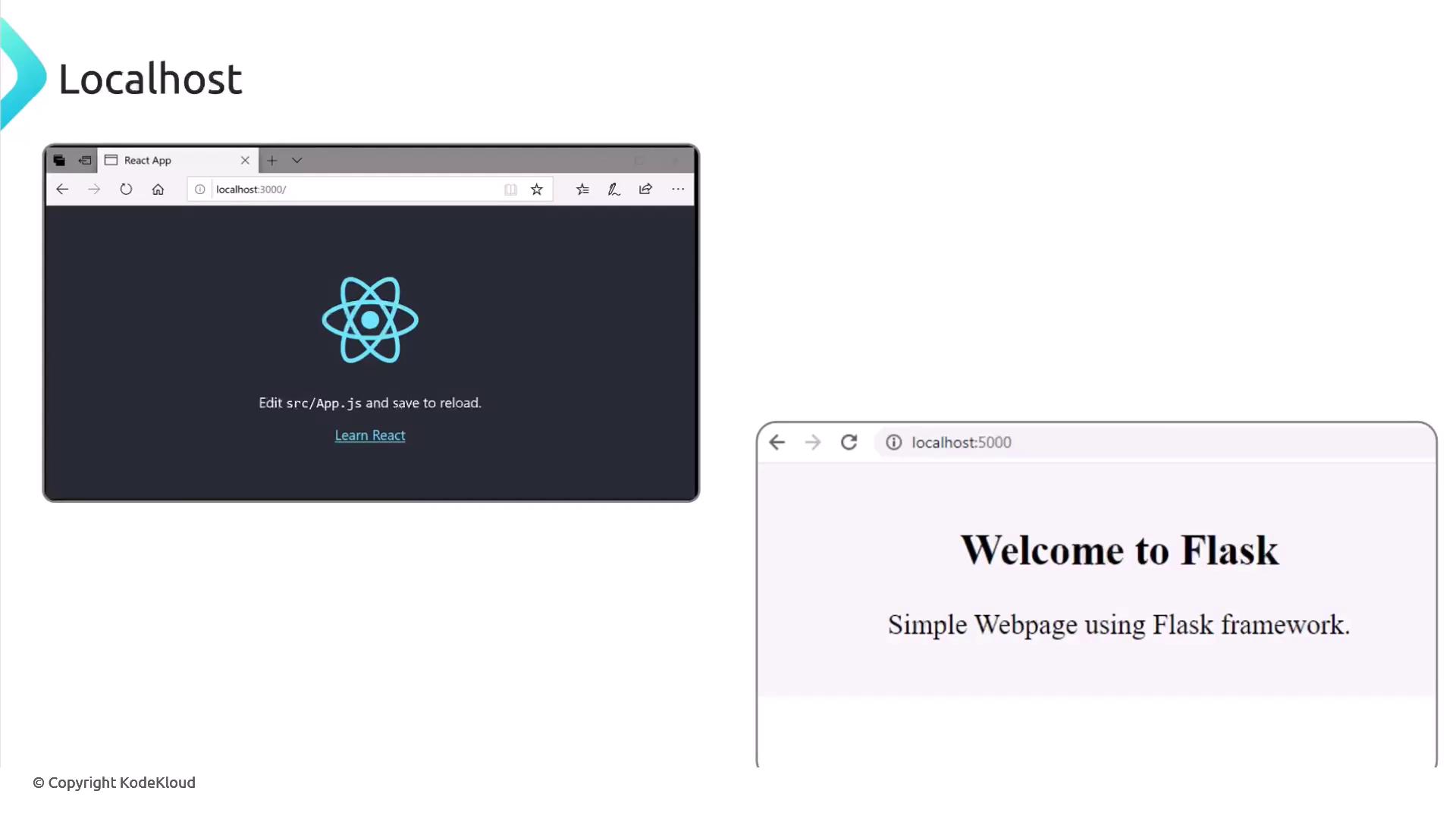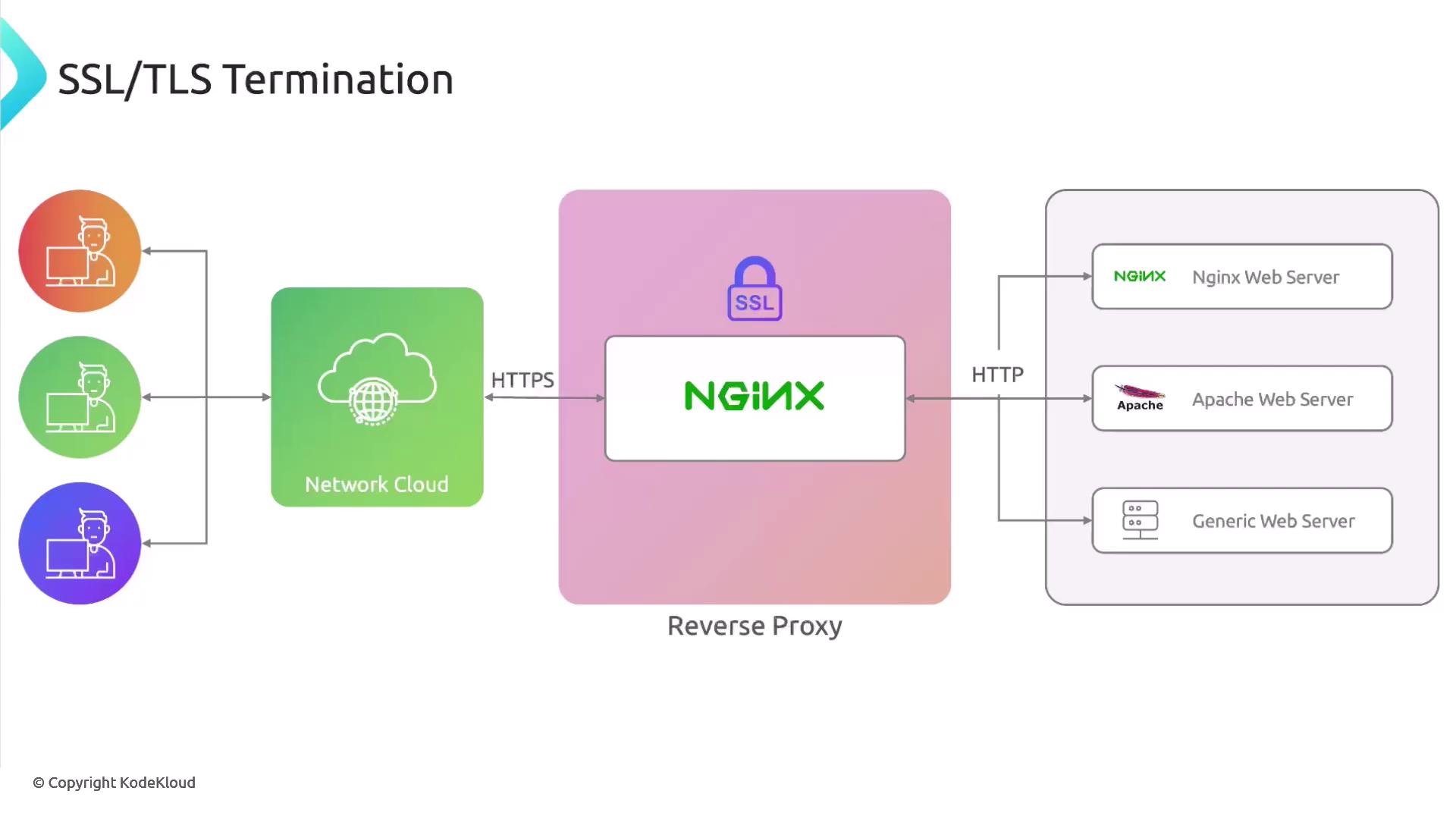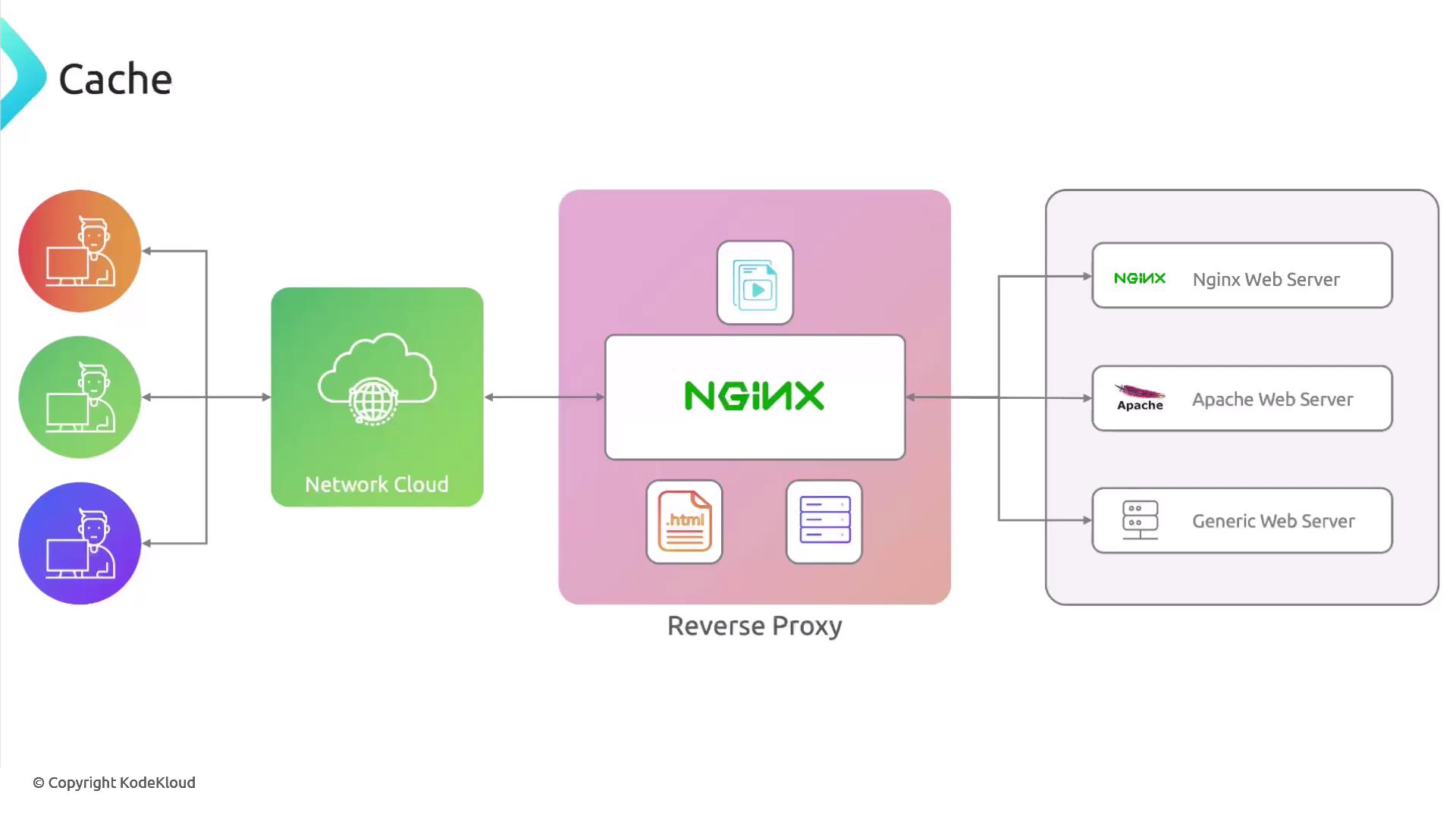Nginx For Beginners
Intermediate Config
Reverse Proxy
In this lesson, we’ll explore what a reverse proxy is, how it works, and the benefits it brings to your architecture.
What Is a Reverse Proxy?
A reverse proxy sits between clients and one or more backend servers. It receives incoming requests, routes them to the appropriate server pool, and returns the server’s response to the client. Common use cases include:
- Hiding backend server identities
- SSL/TLS offloading
- Caching static assets
- Distributing traffic across multiple application servers
Why Use a Reverse Proxy?
A reverse proxy can improve security, performance, and scalability by centralizing request handling, encryption, and caching.
Reverse Proxy vs. Load Balancer
While both components sit in front of your servers, their primary responsibilities differ:
| Feature | Reverse Proxy | Load Balancer |
|---|---|---|
| Main Role | Hide backend details and forward traffic | Distribute traffic evenly across servers |
| SSL/TLS Offloading | Yes | Sometimes (depends on implementation) |
| Caching | Yes | Rarely |
| Application Firewall | Often integrated | Rarely |

Placing Application Frameworks Behind a Reverse Proxy
Modern web apps often use frameworks like React (Node.js), Flask (Python), Rails (Ruby), or Laravel (PHP). By default, these bind to local ports (e.g., React on 3000, Flask on 5000). In production:
- The reverse proxy exposes only itself to the Internet
- Backend servers remain isolated on private networks

Production Best Practice
Never expose application-framework ports directly to the public Internet. Always route through a hardened reverse proxy.
SSL/TLS Termination (Offloading)
Offloading SSL/TLS decryption to the reverse proxy reduces CPU load on your application servers. Clients connect over HTTPS to the proxy, which decrypts the traffic, forwards plain HTTP to backends, then re-encrypts responses.

1. Basic HTTP Reverse Proxy
http {
upstream backend {
server 10.10.0.101:80;
server 10.10.0.102:80;
server 10.10.0.103:80;
}
}
server {
listen 80;
server_name example.com www.example.com;
location / {
proxy_pass http://backend/;
}
}
2. HTTPS Termination at the Proxy
server {
listen 443 ssl;
server_name example.com www.example.com;
ssl_certificate /etc/nginx/ssl/server.crt;
ssl_certificate_key /etc/nginx/ssl/server.key;
ssl_protocols TLSv1.2 TLSv1.3;
location / {
proxy_pass http://backend/;
}
}
3. End-to-End TLS Encryption
When compliance mandates encrypted links all the way to your app servers, enable HTTPS in proxy_pass:
http {
upstream backend {
server 10.10.0.101:443;
server 10.10.0.102:443;
server 10.10.0.103:443;
}
}
server {
listen 443 ssl;
server_name example.com www.example.com;
ssl_certificate /etc/nginx/ssl/server.crt;
ssl_certificate_key /etc/nginx/ssl/server.key;
ssl_protocols TLSv1.2 TLSv1.3;
location / {
proxy_pass https://backend/;
}
}
Caching to Reduce Backend Load
Caching static files and repeatable responses (images, CSS, JSON) at the proxy layer decreases latency and backend CPU usage. NGINX can act as a cache server to serve frequent requests directly from local storage.

Sample Cache Configuration
http {
proxy_cache_path /var/lib/nginx/cache levels=1:2 zone=app_cache:8m;
proxy_cache_key "$scheme$request_method$host$request_uri$is_args$args";
proxy_cache_valid 200 302 10m;
proxy_cache_valid 404 1m;
}
server {
listen 80;
server_name example.com www.example.com;
location / {
proxy_cache app_cache;
proxy_cache_bypass $http_cache_control;
proxy_set_header Host $host;
proxy_set_header X-Real-IP $remote_addr;
proxy_pass http://backend/;
}
}
Further Reading
Watch Video
Watch video content